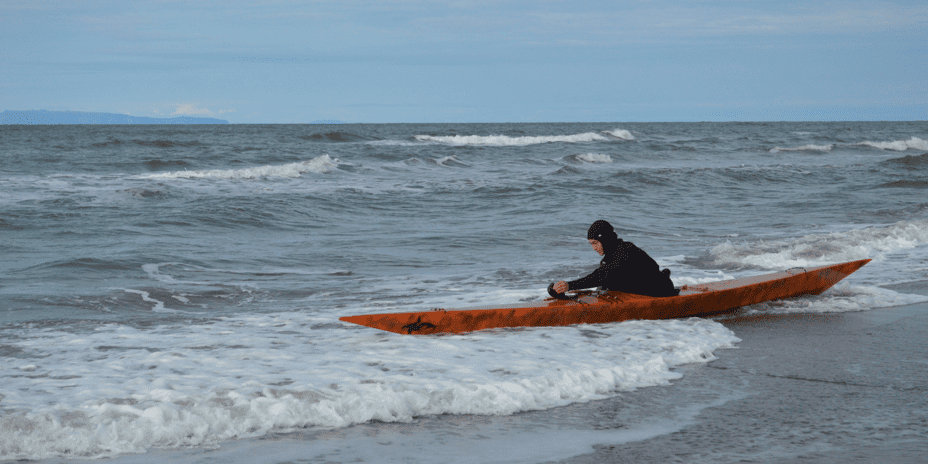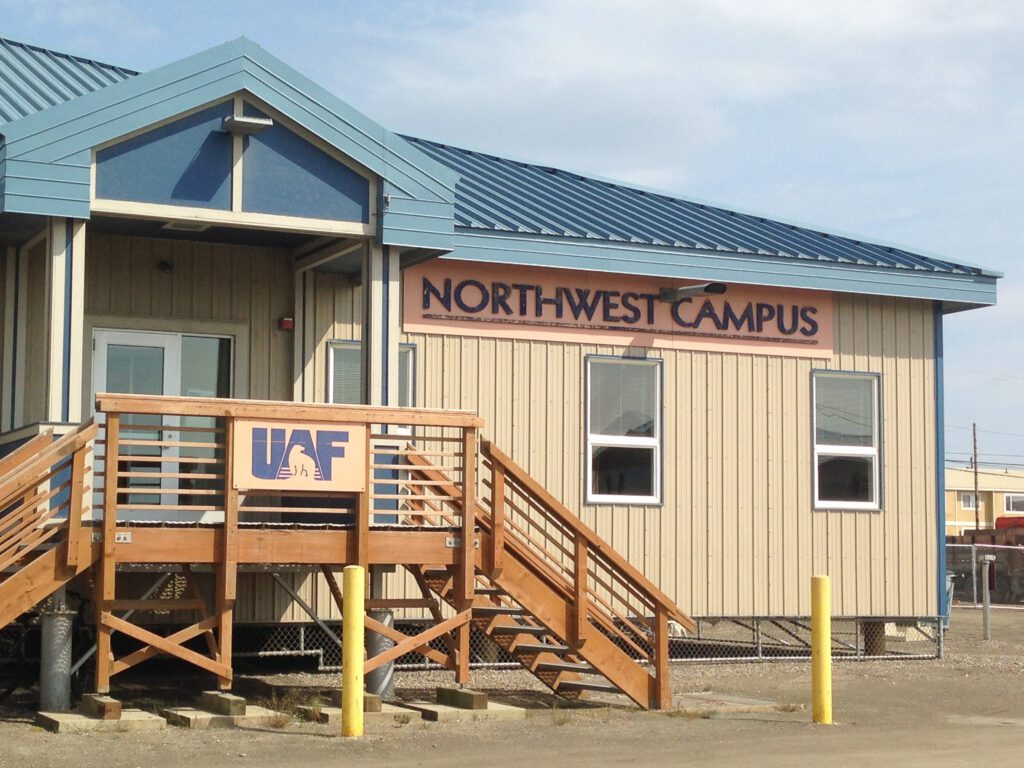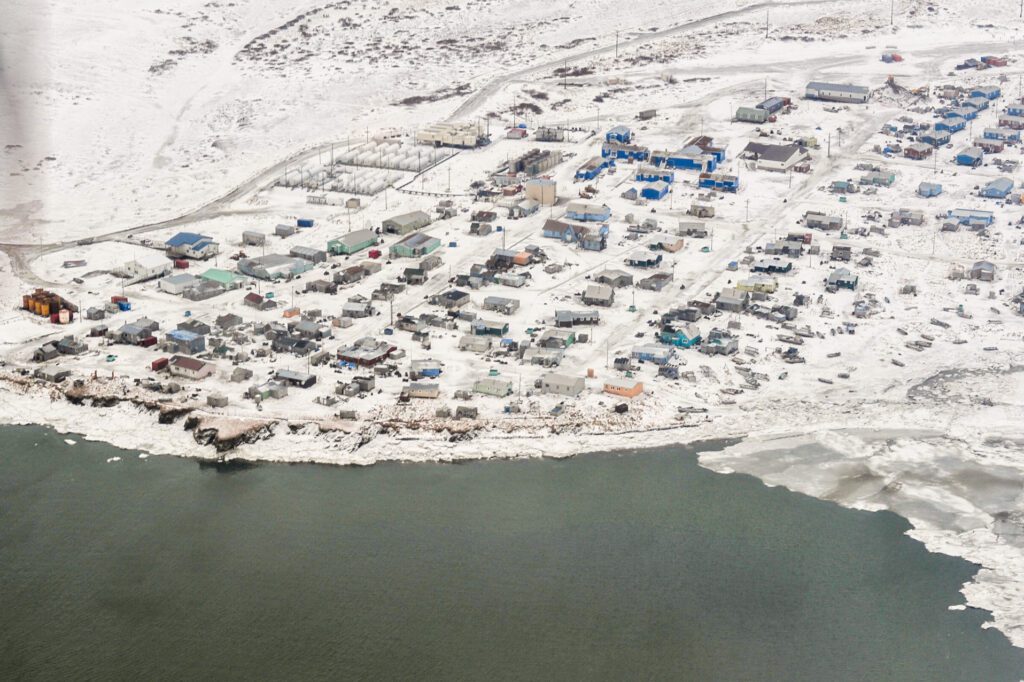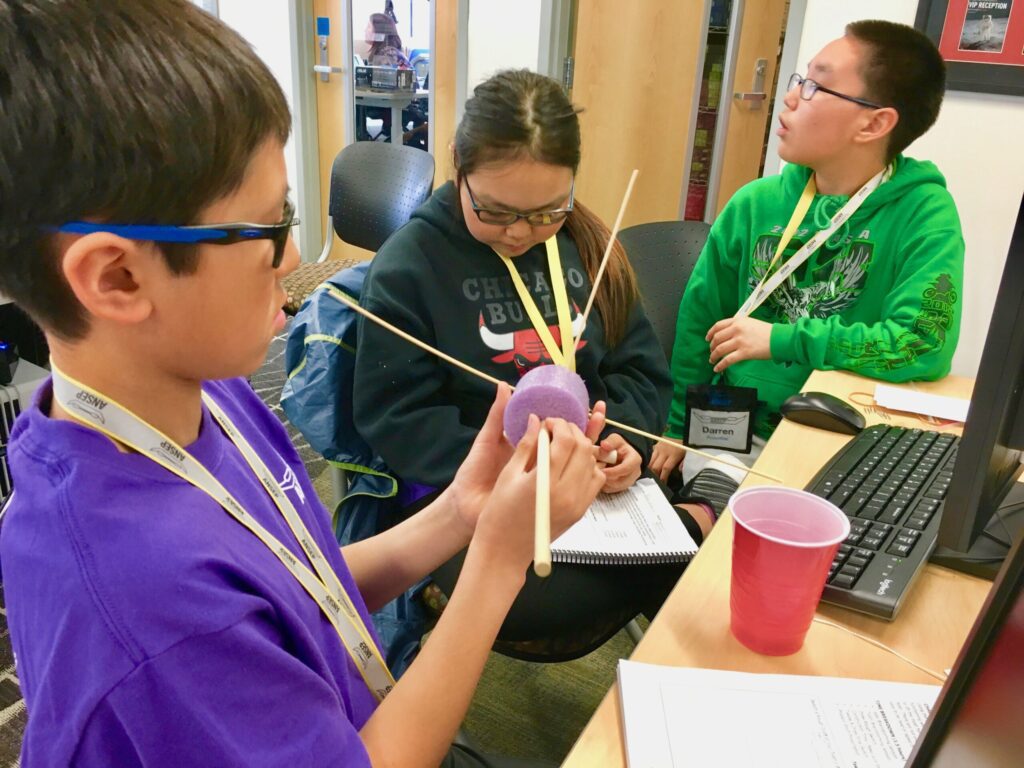As a part of a four-week Native arts business marketing program, students at the Nome vocational school, NACTEC, recently learned about entrepreneurship and Native crafts, including how to make traditional umiaks.
The kayak program, which ended two weeks ago in Nome, started several years ago with the intent of making a Greenlandic kayak. Eventually over time, the program began using a design from King Island.
This year, Doug Walrath, Director of NACTEC, says that students built a traditional King Island kayak with help from Greenlandic master kayaker Maligiaq Padilla. Walrath explained:
“It’s a pretty amazing process. It’s all built in house, and the entire umiak is constructed without any mechanical fasteners at all. It was a process that lasted just under four weeks, and that was taking raw materials and bending it all into form and using artificial sinew to tie all our lashings together.”
And as students learned to make a traditional kayak, they learned business, too. The construction process requires students to think about determining shipping costs, pricing out materials, and entrepreneurship basics. Walrath said:
“What better way to help connect and bring those practices together than to bring in a resident expert, like Padilla, to work with our students and bring in a young man to work along with him? It helps, as well, for him to get developed for our students, to see those connections being built there.”
Walrath adds that running the program last year had even stirred one student to return and build kayaks a second year.
He hopes that, in the future, all of his students take these skills out of the classroom. He knows the skills learned in the classroom are only the tip of an iceberg, when it comes to real-world application:
“That’s merely scratching the surface. We’re well aware that the vast majority of those resident experts reside in the villages. So, hopefully, it’s a matter of the student getting exposed to it enough that they’ll want to go back and take that part they learned with business, marketing, and entrepreneurship, and then, it’s merely a matter of time, a lot of time, to learn a fine art like that and craft a quality product.”
After the four-week course ended, the King Island kayak was donated to Kawerak’s Katirvik Cultural Center, where it is currently on public display.
Image above: KNOM file photo: Maligiaq Padilla kayaks off the coast of Wales.







